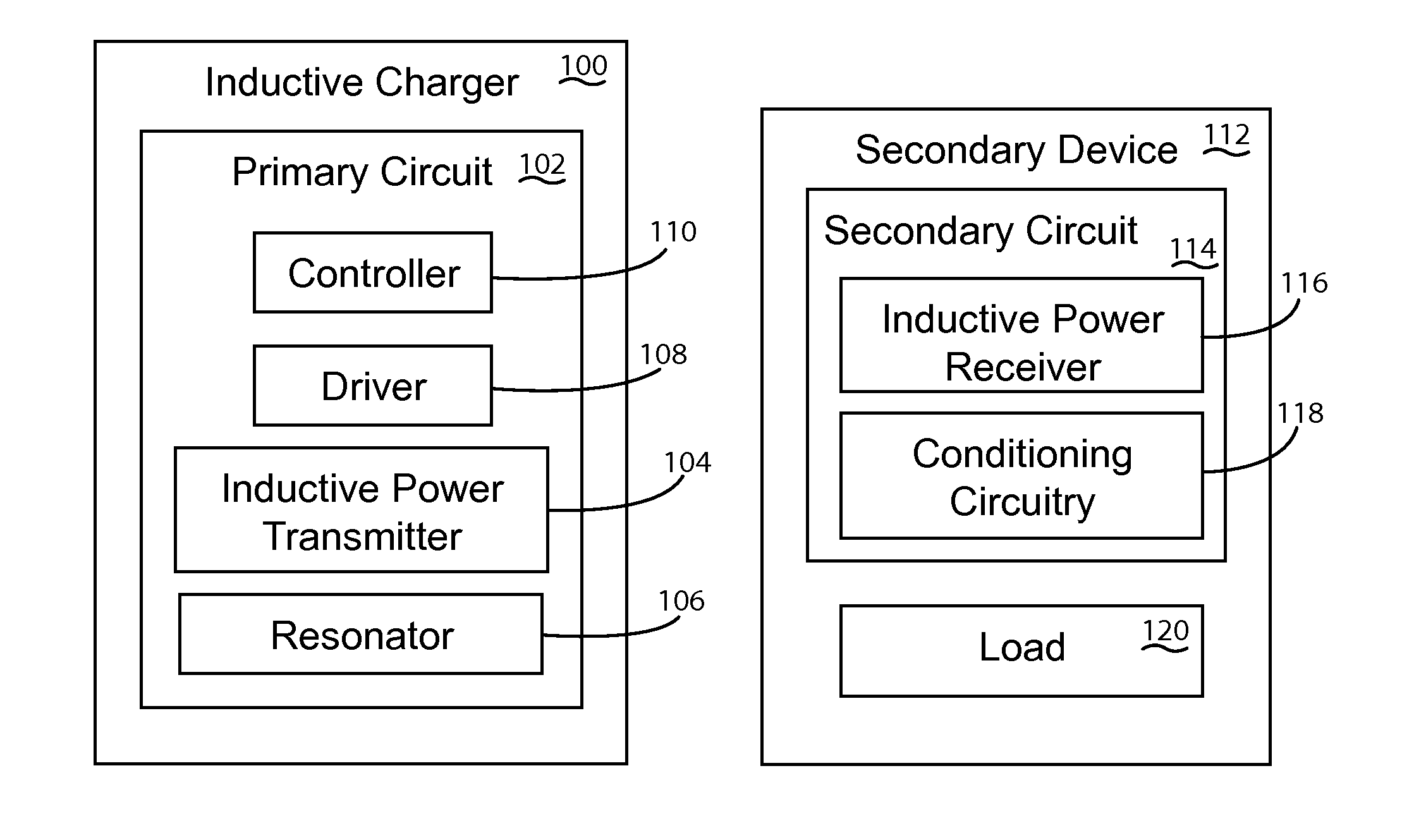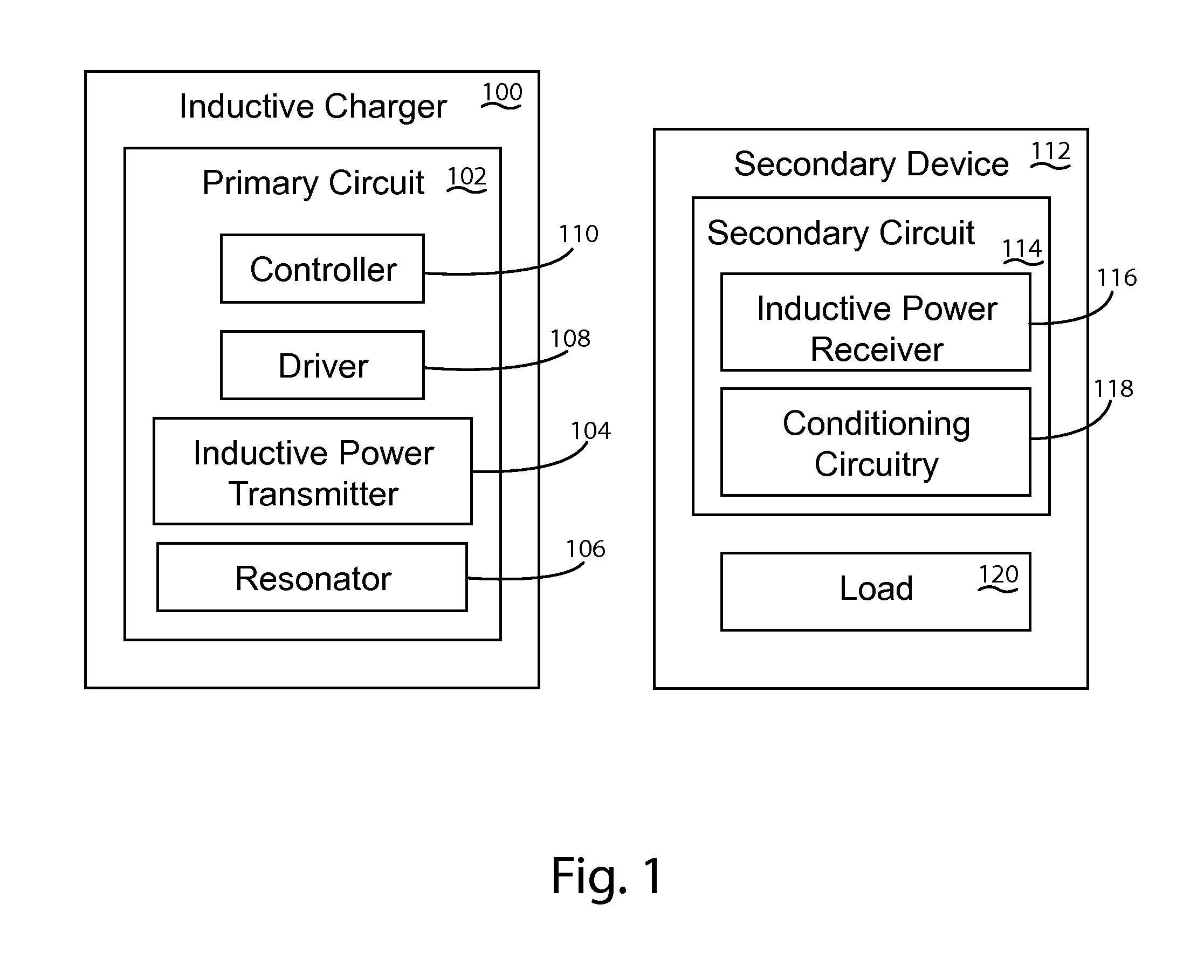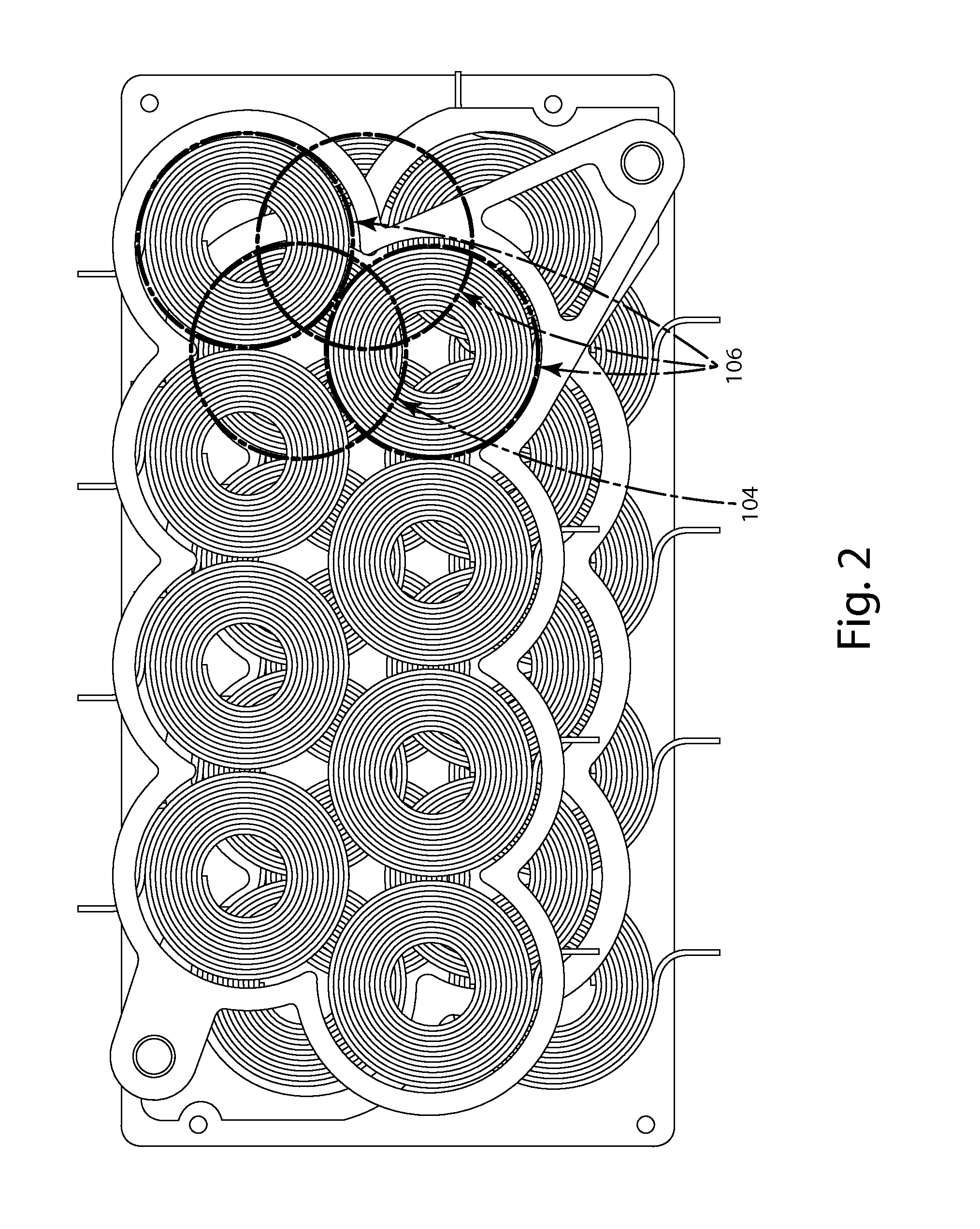System and method for detecting, characterizing, and tracking an inductive power receiver
a technology of inductive power receiver and receiver, applied in the field of system and method for detecting, characterizing and tracking an inductive power receiver, can solve problems such as the field of persistence, and achieve the effect of coupling ratio and coupling ratio
- Summary
- Abstract
- Description
- Claims
- Application Information
AI Technical Summary
Benefits of technology
Problems solved by technology
Method used
Image
Examples
Embodiment Construction
[0037]An inductive charging system in accordance with an embodiment of the present invention is shown in FIG. 1. The inductive charging system includes an inductive charger 100 that generates an electromagnetic field to wirelessly transfer power to a secondary device. The inductive charger can include various primary circuitry 102, which will be discussed in more detail below. In general, the primary circuitry can include one or more inductive power transmitters 104, one or more resonators 106, a driver 108 for energizing one or more inductive power transmitters 104, one or more sensors (not shown), and a controller 110. The secondary device 112 can include a load and various secondary circuitry 114, which will also be discussed in more detail below. Examples of secondary devices can include mobile telephones, tablets, laptops, or any other device desiring power. In general, the secondary circuitry 114 can include one or more inductive power receivers 116, a load 120, and circuitry ...
PUM
 Login to View More
Login to View More Abstract
Description
Claims
Application Information
 Login to View More
Login to View More - R&D
- Intellectual Property
- Life Sciences
- Materials
- Tech Scout
- Unparalleled Data Quality
- Higher Quality Content
- 60% Fewer Hallucinations
Browse by: Latest US Patents, China's latest patents, Technical Efficacy Thesaurus, Application Domain, Technology Topic, Popular Technical Reports.
© 2025 PatSnap. All rights reserved.Legal|Privacy policy|Modern Slavery Act Transparency Statement|Sitemap|About US| Contact US: help@patsnap.com



